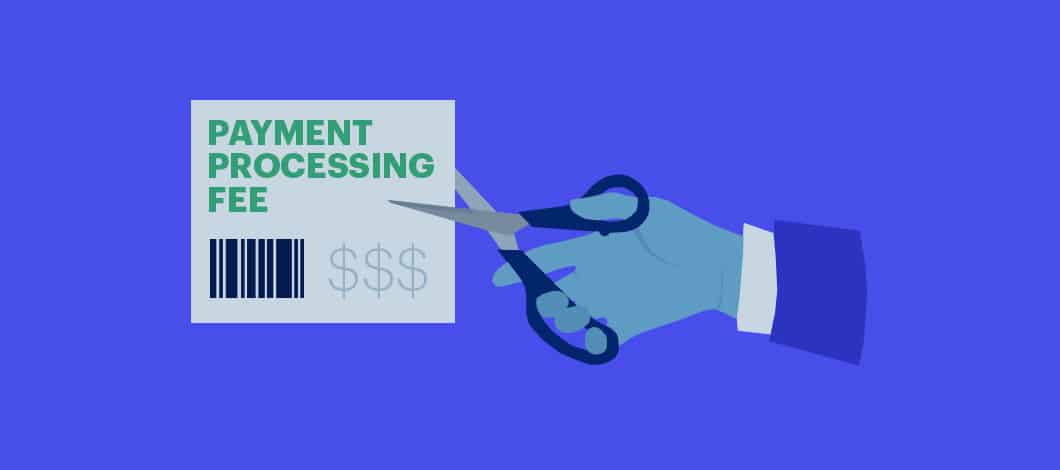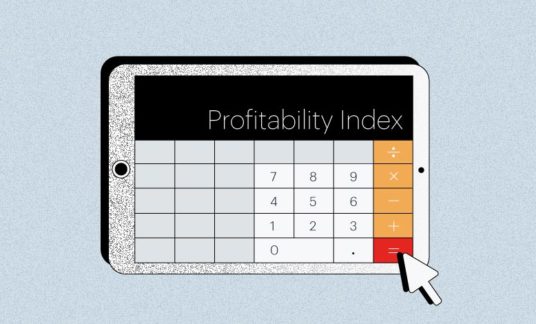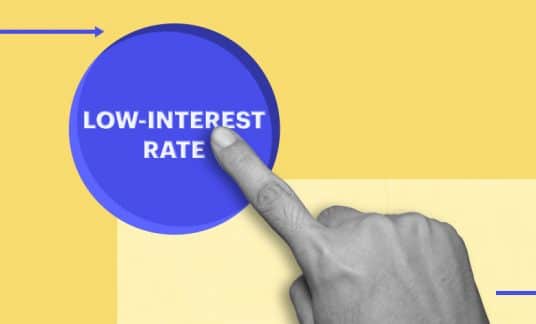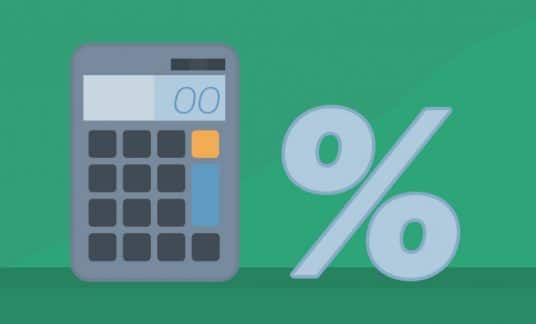Cashless commerce is king. More than 468 billion credit card transactions took place in 2020, according to Statistica. Online payment platforms handle hundreds of billions of dollars of transactions annually, too. But for every one of these sales, businesses get tagged with a payment processing fee.
The fees may be unavoidable, but they can add up quickly. Let’s examine payment processing fees, the average processing fees for various forms of payment and offer a few strategies on how to lower your payment processing fees.
What Is a Payment Processing Fee?
A payment process fee is what’s charged when customers use credit cards or make online payments to compensate the payment processor handling the transaction. For example, a credit card provider charges businesses what’s known as a merchant account fee, which is a percentage of the sale.
Figuring out the average processing fee for payment processing can be challenging as credit cards, debit cards and online payment platforms charge different rates. There also are different tiers depending on volume, chargebacks and a variety of other stipulations.
Average Processing Fee for Credit Cards
Credit card fees for business are typically around 3% of the transaction, although fees can vary greatly depending on several factors. Digital payment platforms have widely varying fee structures while debit cards usually carry the lowest processing fees.
Here is a breakdown of rates:
- VISA: 1.43% to 2.4%
- Mastercard: 1.55% to 2.6%
- Discover: 1.56% to 2.3%
- American Express: 2.5% to 3.5%
Digital Payment Platforms
- PayPal: 3.49% plus a fixed fee + 49 cents per transaction
- Venmo: 1.9% of the transaction + 10 cents per transaction
- Square: 2.6% + 10 cents per transaction
- Stripe: 2.9% + 30 cents per transaction
Debit Cards
Debit cards are less risky transactions since they are backed by money in the banks, so rates are typically lower. While payment processing fees for debit cards are capped at $0.21 + 5% of the transaction by federal regulation, most debit card issuers charge lower fees.

Other Factors that Affect Payment Processing Fees
Several factors affect payment processing fees, including the volume of business being done. Credit card processors typically offer a wholesale discount rate based on transaction volume and amounts.
Whenever a customer uses a credit card for a transaction, there is a fee assessed from your merchant account (your processor) and the customer’s account (their card). This is called an interchange fee.
Other fees can include:
- Gateway fees, such as when authorizations to one card occur through another company’s payment portal
- Nonswiped card transaction fees
- Voice authorization fee
- Fees for payments originating outside the U.S.
- Minimum monthly fees
- Exceeding monthly gross pay fees
- Paper statements or paper submission fees
- Fees for failing to provide the mandatory validation documentation
- Type of transaction, goods, or services
- Transaction amounts
Chargebacks
One of the biggest concerns merchants have are fees for excessive chargebacks. A chargeback occurs when a customer disputes a transaction successfully. Not only can merchants be assessed a fee for the chargeback, but excessive chargebacks can result in credit card processing rates and fees being increased for all transactions.
For example, if a merchant exceeds a 1.5% chargeback ratio for more than 100 chargebacks per month for two consecutive months, Mastercard designates them an excessive chargeback merchant (ECM). They may levy fines up to the amount of the chargebacks.
Visa penalized merchants with excessive chargebacks by placing them in its dispute monitoring program which may result in a $50 per chargeback fee and undergo a chargeback mitigation plan. Failing to reduce chargebacks can lead to a mandatory review process, which can carry a whopping $25,000 fee.
Pricing Models for Payment Processing Fees
As noted, most credit processing rates are listed as a range because of different assessments and pricing models. Here are the most common pricing models for credit card processors:
- Tiered pricing
- Flat-rate pricing
- Interchange Plus pricing
Tiered Pricing
Fees in this model bundle all of the different ways processors could charge you into a single flat fee per transaction. Often referred to as bucket pricing or packaged rate pricing, merchants pay fees depending on whether they fall into a qualified, mid-qualified or non-qualified rate tier.
Qualified rates are the lowest and the ones most often advertised, but not all merchants will qualify for the best rates. Mid-qualified and non-qualified merchants can see rates 1% to 2.5% higher.
Flat-Rate Pricing
Flat-rate pricing is a fixed pricing model, so merchants know how much they will be charged for each transaction plus a per-transaction fee.
Flat rates are typically preferred that do not handle a significant volume of transactions. These merchants generally don’t do enough transactions to qualify for volume discounts or negotiated fees.
Interchange Plus Pricing
Merchants using the Interchange Plus pricing model pay the interchange rate for each transaction plus any add-on fees. Fees might include a per-transaction fee and/or an additional percentage above the published interchange fees.
For merchants, Interchange Plus pricing may provide lower fees but can vary greatly and be much more complicated to forecast.

How to Reduce Payment Transaction Fees
Payment processing fees can be complex, but there are ways to reduce the fees you pay. Here are some of our top tips to reduce payment transaction fees.
Negotiate Rates
Depending on your volume, you may be able to negotiate better rates for payment processing fees. The more transactions you handle each month and the fewer chargebacks you have, the better rate you may be able to get.
As your business grows, you may benefit from reviewing your rates and fees regularly. Higher volume may qualify you for volume discounts. You may find that as your situation changes, another pricing model may offer better savings.
Swipe or Use Chips Whenever Possible
When a card number is keyed, there is no way for the credit card processor to know if the card was present for the transaction. As such, these transactions represent a higher risk of fraud, and credit card processors will charge a higher rate (non-swiped or card-not-present-rate).
Too many non-swiped transactions can wind up causing you to be charged at a higher (non-qualified) rate for an entire day. While you may not be able to avoid all non-swiped transactions, limit as many as possible.
Be Proactive about Fraud Prevention
Higher levels of fraud will result in more risk for payment processors and can lead to higher payment processing fees.
At a minimum, deploy an address verification service (AVS) to verify a cardholder’s billing address with the issuer for any card-not-present transactions. VISA, for example, charges a lower interchange rate when merchants do an AVS check on transactions.
Read the Fine Print for Payment Processing Agreements
There are many fees that payment processing companies can charge, so always make sure you read the fine print before signing any agreement. Not all payment gateways make it easy to decipher a complex maze of potential fees. You don’t want to sign on because of lower transaction fees, for example, only to find there are significantly higher non-processing fees.
Look for additional fees such as:
- Terminal rental
- Statement fees
- Minimum processing fees
- Account maintenance
- Regulatory produce fees
- PCI annual fees or PCI non-compliance fees
Some of these fees may be negotiable depending on the processor.
Batch Process Transactions
You can reduce fees by sending transactions in batches at the same time rather than individually. This reduces any network connection fees. Typically, merchants get the most favorable interchange rates when they settle charges within 24 hours, so don’t put off your clearing call for processing.
There are exceptions to this rule, however. Travel and entertainment businesses typically have 8 days to process transactions to qualify for favorable rates.
While authorization will still occur at the time of purchase, the transaction doesn’t get charged to the card issuer until the batch processing occurs.
Shop Around
It also can pay to shop around even if you’re happy with your payment processing partner. If you can find a lower rate, see if your merchant services provider will price-match to keep your business. Even if the credit card company is unwilling or unable to match the pricing structure, it may be willing to negotiate in other areas, such as contract terms or equipment costs.
Check Your Merchant Account and Terminal Setup
Making a mistake when setting up your terminal or merchant account can lead to costly errors. For example, selecting the wrong merchant category, the type of transactions and the frequency of transactions tied to your account can result in higher fees.
Make sure terminals are set up properly and you’re not paying for features you don’t need.
Handle Statements Online
Most processors now charge a surcharge for mailing statements. Conduct business with them online or by email and you can save a few bucks each month.










